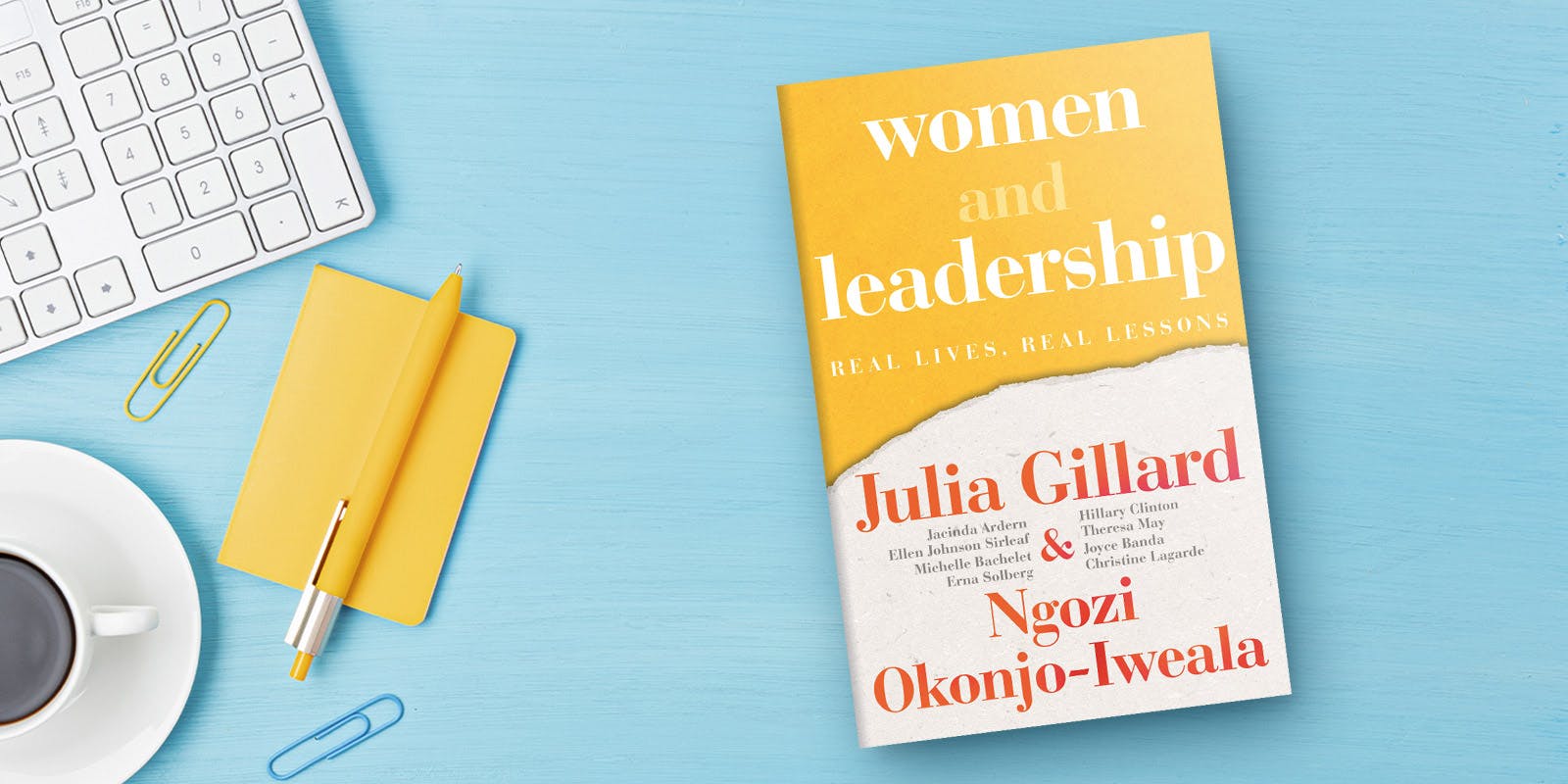Julia Gillard and Ngozi Okonjo-Iweala crunch the numbers and offer an urgent rallying cry in Women and Leadership.
‘How many women have won an Academy Award for Best Director?’ ask Julia Gillard and Ngozi Okonjo-Iweala in their book Women and Leadership. ‘The answer is one: Kathryn Bigelow for the film The Hurt Locker. That makes one woman and ninety-three men across the history of the Oscars.’1 As Gillard and Okonjo-Iweala point out, it’s a dispiriting result. But it could be one worse.
Across almost every measure of success in today’s society, the odds are disproportionately stacked against women. In Women and Leadership Gillard and Okonjo-Iweala present an analysis of the influence of gender on women’s access to positions of leadership, the perceptions of them as leaders, the trajectory of their leadership and the circumstances in which it comes to an end. Rather than focusing on the repercussions of the maleness of the world around us, instead they turn our attentions to phenomenal female success stories, including Jacinda Ardern, Hillary Clinton, Ellen Johnson Sirleaf, Theresa May, Michelle Bachelet and more. By presenting the lessons that can be learned from women leaders, Gillard and Okonjo-Iweala provide a roadmap of essential knowledge to inspire us, and an action agenda for change.
Here, we pull some numbers from Women and Leadership – followed by a brief passage from the book – to offer a snapshot of the extent to which gender bias influences our society today.
Women in politics and international relations
Women as leaders of the United Nations or World Bank: 0
Women as presidents of the United States, France, Nigeria, Mexico or Japan: 0
Women as prime ministers of Italy, Spain, Sweden, Malaysia or Singapore: 0
Percentage of UN member nations that have ever been led by a woman: 30% 2
Number of countries that have had more than three woman leaders: 0
Percentage of women in ministerial positions in 153 countries examined by the World Economic Forum: 21% 3
Women in business
Percentage of women CEOs of Fortune 500 companies (USA’s largest businesses): 6.6% 4
Number of women CEOs of FTSE 100 Index companies (UK’s largest businesses): 6 5
Number of women CEOs of the top 50 companies on the Hang Seng Index (Hong Kong’s largest businesses): 1 6
Globally, for every dollar a man earns, a woman earns: 63 cents 7
Women in the news, media, TV and film
Women as a percentage of people heard, read about or seen in news media: 24%
Percentage of news stories that clearly challenge gender stereotypes: 4% 8
Percentage of female speaking character roles in the top 100 box office successes: 30.9% 9
Women in sport and culture
Number of women in the highest paid 100 athletes: 1 (Serena Williams, #63) 10
Percentage of female Man Booker Prize winners: 34%
Percentage of female Nobel Laureates in Literature: 12% 11
Percentage of female Nobel Laureates across all categories: approximately 6%
Women in industry
Women as a percentage of the big data and artificial intelligence workforce: approximately 26%
Women as a percentage of the engineering workforce: 15% 12
Percentage of US venture capital funding awarded to companies founded solely by women: 2.7% 13
There are so many more dimensions to gender discrimination: sexual violence, early marriage, human trafficking, honour killings, the denial of reproductive rights, and the list goes on.
But describing all the characteristics, repercussions and ripple effects of the maleness of the world around us is not the purpose of this book. Rather, our mission is to examine the many obstacles holding women back from becoming leaders, with a view to working out how best to clear those hurdles out of the way.
We see the task of having an equal number of women leaders in politics and business around the world as an urgent one.
The World Economic Forum has calculated that, if we continue to improve at the current rate, closing the global gender gap in political representation will take ninety-five years.
So slow is the pace of change that not only will we not achieve gender equality in our lifetimes, it will likely not be realised in the lifetimes of children who are born today.
Our choice is between having the world crawl towards the dawn of political gender equality in the year 2115, or acting more dramatically now. While fast change will undoubtedly be difficult to achieve, to simply wait would be intolerable.
We hope you share our mindset of fixed determination coupled with extreme impatience. Let’s get this done.
1. UN Women, ‘Visualizing the data: Women’s representation in society’, 25 February 2020, unwomen.org/en/digital-library/multimedia/ 2020/2/infographic-visualizing-the-data-womens-representation
2. Statista, ‘Number of countries where the highest position of executive power was held by a woman, in each year from 1960 to 2020’, January 2020, statista.com/statistics/1058345/countries-with-women-highest-position-executive-power-since-1960
3. World Economic Forum, ‘Global Gender Gap Report 2020’, report, Geneva, 2019
4. UN Women, ‘Visualizing the data’
5. Kalyeena Makortoff, ‘Half of new FTSE 100 chiefs must be women to hit gender target’, The Guardian, 13 November 2019
6. Community Business, ‘Women on boards 2020: Q1’, 2 January 2020, communitybusiness.org/women-boards-2020-Q1
7. World Economic Forum, ‘Global Gender Gap Report 2020’
8. ‘Global Media Monitoring Project 2015’, report, World Association for Christian Communication, November 2015
9. ‘Improvement toward inclusion in film, but more work to be done’, USC Annenberg School for Communication and Journalism, 4 September 2019, annenberg.usc.edu/news/research-and-impact/improvement-toward-inclusion-film-more-work-be-done
10. Kurt Badenhausen and Forbes Staff, ‘The world’s highest-paid athletes 2019’, Forbes, 11 June 2019
11. Alex Marshall and Alexandra Alter, ‘Olga Tokarczuk and Peter Handke awarded Nobel Prizes in Literature’, New York Times, 10 October 2019
12. World Economic Forum, ‘Global Gender Gap Report 2020’
13. PitchBook, ‘The VC female founders dashboard’, updated 6 April 2020, pitchbook.com/news/articles/the-vc-female-founders-dashboard














